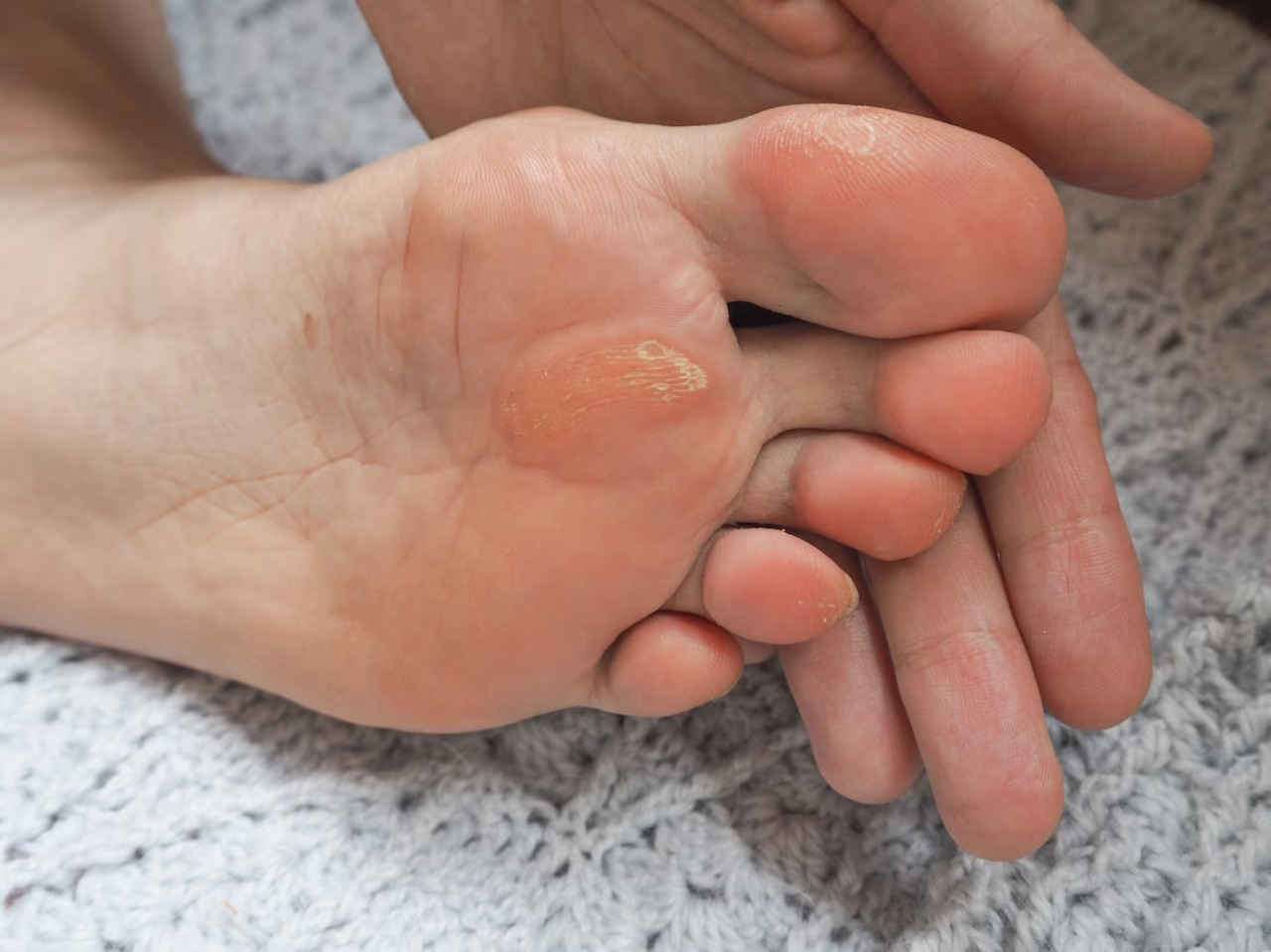
Say Goodbye to Painful Corns – Walk Comfortably Again
What Is a Corn?
A corn is a thickened area of skin that forms in response to constant friction or pressure. It’s your skin’s natural way of protecting the underlying tissues. However, as the layers of hard skin build up, they can become painful, especially when pressed.
There are mainly two types of corns:
Hard Corns – Usually found on the tops or sides of toes or the soles of the feet.
Soft Corns – Appear between the toes due to moisture and friction.
Corns are often mistaken for calluses or warts, but they differ in appearance, cause, and treatment approach. Our experienced dermatologists carefully evaluate your skin before recommending the most suitable treatment.
Common Causes of Corns
Several factors can lead to the development of corns, including:
Wearing tight or ill-fitting footwear
High heels or narrow shoes that compress the toes
Prolonged standing or walking
Abnormal foot structure such as bunions or hammertoes
Friction from repetitive motion, such as running or dancing
Lack of proper foot care or hygiene
Identifying the root cause is the first step in ensuring long-term relief and preventing recurrence.
Why Professional Treatment Is Important
Many people try to treat corns at home using over-the-counter creams, blades, or pumice stones. However, improper removal can cause skin injury, bleeding, or infection. Especially for individuals with diabetes or poor circulation, self-treatment can be risky.
At our clinic, we provide medical-grade corn removal treatments under the supervision of qualified dermatologists. Our approach ensures:
Complete removal of the corn and its root cause
Minimal pain and downtime
No scarring or recurrence
Sterile and hygienic procedures
Advanced Corn Removal Treatments
We offer a range of scientifically proven treatments to remove corns effectively and safely. Each procedure is customized based on the type, size, and depth of the corn, as well as the patient’s skin type and medical history.
1. Cryotherapy
Cryotherapy involves freezing the corn using liquid nitrogen. The extreme cold destroys the thickened tissue, allowing new, healthy skin to form. This procedure is quick, safe, and minimally invasive.
2. Chemical Peeling for Corns
Dermatologically approved peeling agents are applied to gently exfoliate and dissolve the thickened skin. This treatment is ideal for small or superficial corns and offers smooth, soft results without discomfort.
3. Laser Corn Removal
Our advanced laser technology targets the hard, dead skin precisely without damaging the surrounding healthy tissue. The laser energy vaporizes the corn and stimulates skin regeneration. It’s one of the most effective and pain-free methods available today.
4. Surgical Corn Excision
For deep-seated or recurrent corns, a minor surgical procedure may be required. Performed under local anesthesia, the dermatologist carefully excises the corn, ensuring complete removal and relief from pain.
5. Customized Orthotic and Footwear Guidance
Since friction and pressure are the root causes of corns, we also offer personalized footwear recommendations and orthotic supports to prevent recurrence.
What to Expect During the Procedure
Your treatment begins with a detailed foot examination to determine the type and severity of the corn. The dermatologist will then recommend the most suitable treatment plan. Most procedures are quick, painless, and performed on an outpatient basis.
You can return to your normal activities immediately after the session. Post-treatment care usually involves:
Keeping the area clean and dry
Avoiding tight shoes for a few days
Applying prescribed creams or moisturizers
Regular follow-up for best results
Benefits of Choosing Our Clinic
Experienced Dermatologists: Our specialists are trained in advanced skin and aesthetic procedures.
Modern Equipment: We use the latest laser and cryotherapy technologies for precision treatment.
Hygienic Environment: All treatments are performed in a sterile, clinic-grade setup.
Personalized Care: Every treatment is tailored to your individual foot condition and lifestyle.
Quick Recovery: Most patients experience instant pain relief and visible improvement within days.
Post-Treatment Care and Prevention
Once your corn has been removed, taking preventive steps can help ensure it doesn’t return.
Here are a few tips from our dermatology experts:
Wear well-fitted, cushioned shoes with enough toe space.
Avoid walking barefoot on hard surfaces.
Keep your feet clean and moisturized daily.
Use protective pads if you engage in repetitive motion activities.
Visit a dermatologist if you notice recurring corns or discomfort.
